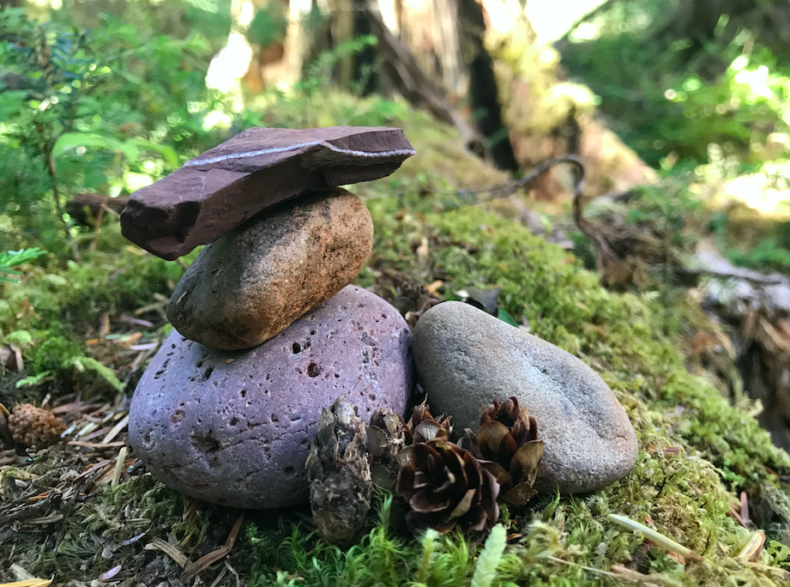
The quietest place in America is fern-swaddled, lichen-draped, moss-blanketed. It is past the splintered tree, through the tilted spruce, beyond a damp pocket of bog, its precise location marked by a tiny cairn of polished riverstone. Its floor is a dappled jumble of deadfall and blowdown, nurse logs melting back into the earth even as they nourish salal and the orange half-moons of shelf fungi. Its walls are fir and spruce, their arms heavy, pulled earthward by sleeves of needles that strain the sunlight like a colander. Its roof is blue sky interrupted only by the parabolic swoop of a gray jay; absent other sound, you can hear the starched crisp flap of its wings.
The quietest place in America is quiet — conspicuously quiet, palpably quiet, soft and heavy as a sweater. When, last month, Elise and I made our pilgrimage to the spot — dubbed One Square Inch of Silence by its designator, the acoustic ecologist Gordon Hempton — we found nature itself holding its breath. No birds sung; no squirrels chattered their staccato alarm call (though when one descended from her tree, we could detect the rasp of her claws on bark). We heard the gentle susurrus of wind, the dopplered drone of a passing bee. Synthetic noises — the buzz of a zipper, the snap of a backpack buckle — were discordant and ear-achingly loud. The overhead passage of an airplane, after twenty minutes of blessed hush, felt like an unspeakable violation, the distant roar of its engines as bombastic and menacing as “Flight of the Valkyries” blaring from the helicopters in Apocalypse Now.
The quietest place in America is in Olympic National Park, 3.2 miles up the Hoh River Valley and another quarter-mile or so off the trail. Here is what Hempton, a guy who really knows how to listen, wrote about the place in his memoir:
Silence is a sound, many, many sounds. I’ve heard more than I can count. Silence is the moonlit song of the coyote signing the air, and the answer of its mate. It is the falling whisper of snow that will later melt with an astonishing reggae rhythm so crisp that you will want to dance to it. It is the sound of pollinating winged insects vibrating soft tunes as they defensively dart in and out of the pine boughs to escape the breeze, a mix of insect hum and pine sigh that will stick with you all day. Silence is the passing flock of chestnut-backed chickadees and red-breasted nuthatches, chirping and fluttering, reminding you of your own curiosity.
During the pandemic, the commodity of quiet grew briefly less scarce. “We heard birds,” marveled the mayor of a less raucous Paris; happy humpback whales may have produced fewer stress hormones in Glacier Bay. Now the din of the world is largely returned, and quiet has been relegated again to its One Square Inch. Visit it, if you can.